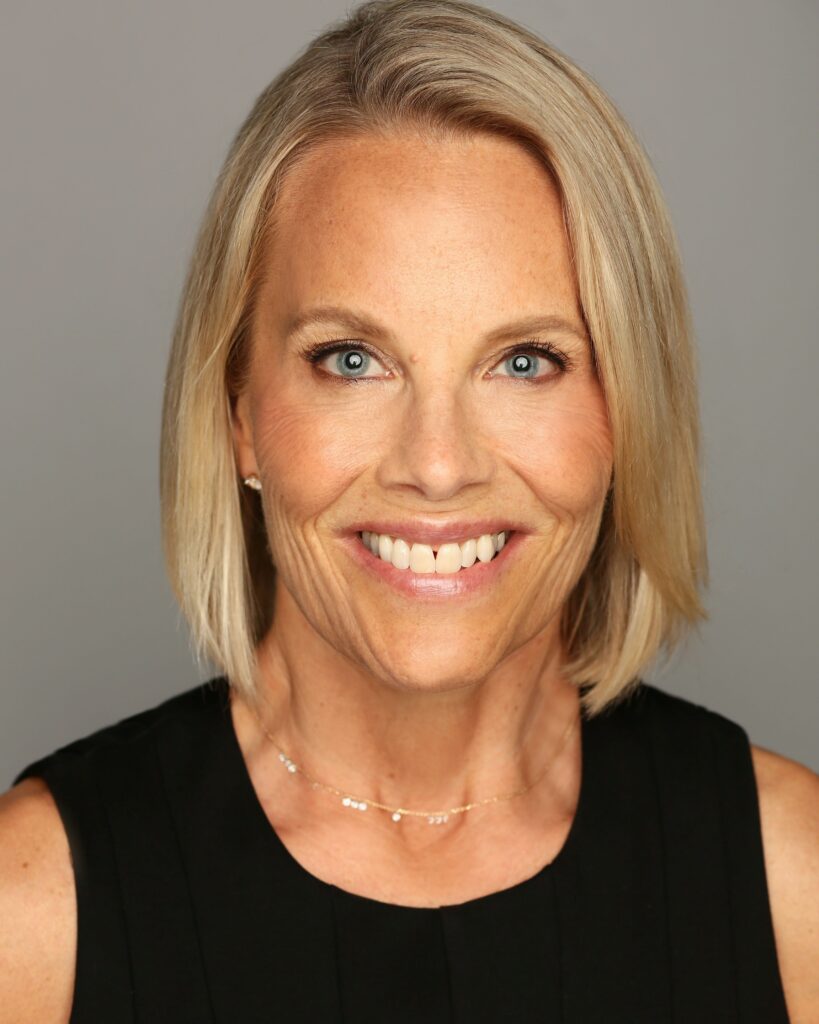School districts across the country work hard to create safe and supportive learning environments. Yet, many carry a level of liability that often goes unrecognized: unassessed or under-assessed physical security risks on their campuses. While districts routinely update policies, training, emergency procedures, and the physical environment itself, lighting, access points, landscaping, camera coverage, sightlines, signage, and building layouts can pose predictable hazards that increase the likelihood and severity of insurance claims. For risk managers, these conditions represent not just safety concerns but clear areas of exposure that can be identified and mitigated through structured physical security assessments.
A physical assessment is a systematic evaluation of buildings and grounds that identifies vulnerabilities before they contribute to an incident. Act 55 in Pennsylvania, for example, requires school entities to use standardized assessment criteria when evaluating physical security. This includes reviewing fencing, access control, visitor flow, building maintenance, emergency communication systems, surveillance visibility, and environmental factors that influence risk. Although the legislation is state-specific, the principles behind it apply nationally: schools that regularly conduct structured assessments reduce their exposure to preventable loss.
Much of the liability tied to school campuses is rooted in foreseeability. Poor lighting in parking lots, overgrown landscaping that obstructs lines of sight, malfunctioning door hardware, unsecured secondary entrances, blind spots in hallways, and unclear territorial signage all create conditions where incidents are not just possible, they are predictable. From a claims-management perspective, these environmental deficiencies often shape negligence arguments after the fact. A school that has not conducted a recent assessment may struggle to demonstrate that it exercised reasonable care in identifying and addressing hazards.
Crime Prevention Through Environmental Design (CPTED) provides a valuable framework for understanding why physical deficiencies matter. CPTED principles, such as natural surveillance, natural access control, territoriality, and maintenance, directly support risk reduction. When campuses maximize visibility, clearly define boundaries, control access points, and maintain facilities, they reduce opportunities for trespassing, vandalism, assault, unauthorized entry, and property damage. These same factors also reduce everyday liability related to playground equipment failures, slip-and-fall incidents, and inadequate lighting. In short, CPTED principles are not just security concepts; they are loss-prevention tools.
Regular physical assessments also strengthen the defensibility of claims. When an incident occurs, assessors’ reports, tiered criteria, and documented corrective actions demonstrate that a district is proactively managing its risk environment. This documentation provides evidence that hazards were identified, prioritized, and addressed. For public-sector insurers and risk pools, this level of diligence can significantly reduce litigation exposure and loss severity.
Another benefit is improved coordination with local emergency responders. Many assessment standards recommend or require law enforcement walkthroughs of buildings and grounds every two years. These tours enhance shared situational awareness and improve emergency response times, both of which can reduce the severity of losses during high-risk incidents.
Ultimately, regular physical assessments are among the most cost-effective risk-reduction strategies available to school districts. They help identify hazards, prioritize improvements, reinforce safe design, and provide the documentation that municipalities and insurers need to manage liability. Encouraging and supporting these assessments is not only a best practice, but it is also a measurable way to protect students, staff, facilities, and the financial stability of the organizations they serve.

Mason Wooldridge
Subject Matter Expert, Sigma 7
Summary of Qualifications
To date, Mason has worked in every facet of the school safety and security world for both public and private K-12 educational environments. Currently, he is a registered provider through the Pennsylvania Commission on Crime and Delinquency in the facet of providing physical safety and security assessments.
He is also an active subject matter expert for Pennsylvania’s Act 55 (School Safety Code) related topics and requirements through state-based grant allocations, as well as working privately within the world of school safety throughout the Commonwealth of Pennsylvania and abroad. Mason is a member of his county’s Safe Schools Committee and is also working to bring brain health programming into the lives of Pennsylvania’s youth through diversionary and prevention programming. He has also held the position as Director of Safety and Security for a Public K-12 School District.
His most recent pilot project in Pennsylvania, across 10 counties, is in building Emergency Operations Plans for schools. He is also working on providing reunification training and advanced crisis communications/ICS/Emergency Response training as well. Upon the completion of these pilot projects, he and his team of SME’s will provide these trainings free to educational settings throughout the entire state of Pennsylvania, with a total state provision ending in the summer of 2027.
Responsibilities
He is currently responsible for providing mandated training throughout the Commonwealth of Pennsylvania for all public school districts and non-public educational entities. He oversees the creation of situational awareness training, physical security training, coordination with law enforcement training, and emergency management and response training for this Pennsylvania-based project. He also works directly with school districts across the country for Sigma 7 related to emergency response planning and staff training geared towards building and using situational awareness.
Business Experience
- Current Educational Consultant & SME, Sigma 7 / Risk & Strategic Management Consulting (VA)
- Current School Safety/Security Consultant & SME, City of Philadelphia School Dis. (PA)
- Current Founder and Principal of SAFE AT SCHOOL CONSULTING (PA)
- Author of Soft Targets, a book related to building safer schools
- Former Dir. of Safety & Security, Hanover Area School District (PA)
- Former Co-Founder & Managing Partner, OKDi, a school safety non-profit (IN, PA)
- Former Dir. of Operations, Net Talon Security Systems (VA, Dubai, LA, IN)
- Co-Recipient of 3 Independent U.S. Patents related to school safety
Education
BA, University of Lynchburg
-Majored in Religious Studies
-Secondary focuses in Philosophy and Business Administration
Every safety and risk professional eventually reaches a moment of reflection: What do I wish I had known when I started?
One key lesson stands out—safety culture isn’t automatic; it’s cultivated. While many leaders value safety, acknowledgment alone doesn’t sustain a resilient organization. A healthy safety culture is also the foundation of effective risk management. The same human factors that drive incidents—complacency, overconfidence, and resistance to change—also shape organizational exposure and fiscal risk. When safety becomes transactional or compliance-driven, it weakens enterprise risk management. True resilience emerges when safety is viewed not as a set of regulations to follow, but as a strategic discipline that protects people, performance, and reputation.
Across industries, recurring toxic mindsets—what I call the poisons of occupational safety—undermine engagement, accountability, and progress. The good news: each has an antidote.
Common Poisons and Their Antidotes
“We’re OSHA Compliant.”
Poison: Many organizations believe meeting OSHA requirements is enough, but compliance is a baseline, not a benchmark. Focusing only on regulations creates a false sense of security that limits growth.
Antidote: Continuous Improvement – Track leading indicators like engagement and near-miss reporting—not just incident rates.
“We’ve Always Done It This Way.”
Poison: When long-standing habits are mistaken for best practices, tradition quietly resists innovation. This mindset prevents learning and blocks the use of safer, more innovative methods.
Antidote: Embrace Change – Reward innovation through recognition and open dialogue.
“Why Train for Hazards We Don’t Face?”
Poison: Some minimize the value of training for rare events, but preparedness looks unnecessary—until it’s not. Emergencies seldom follow the expected script.
Antidote: Proactive Learning – Make training scenario-based and practical, incorporating community partners.
“Safety Slows Production.”
Poison: This myth drives shortcuts and fatigue. In truth, unsafe operations cost more through downtime, claims, and turnover.
Antidote: Safety as a Productivity Booster – Use job hazard analyses to enhance both safety and efficiency.
“Safety Is Common Sense—and the Safety Department’s Job.”
Poison: Assuming safety is innate or isolated sidelines accountability. Safety is a shared responsibility.
Antidote: Shared Responsibility – Empower every employee to act as a safety leader and recognize proactive prevention.
“We Don’t Have the Budget.”
Poison: Budget constraints often push safety lower on the list, yet ignoring hazards is far more expensive over time.
Antidote: Risk Prioritization – Use a risk matrix to target limited resources where they matter most.
“Incidents Are Unavoidable.”
Poison: Accepting accidents as inevitable erodes learning and accountability. This fatalism stifles progress.
Antidote: Prevention Mindset – Encourage open discussion of near-misses and lessons learned to prevent recurrence.
“Acknowledging Risk Creates Liability.”
Poison: Some fear transparency invites blame, but denial breeds liability and damages trust.
Antidote: Accountability and Transparency – Train leaders to address issues decisively and document corrective actions.
From Compliance to Culture
Safety and risk management are inseparable. The same cultural toxins that corrode safety also weaken fiscal stability and public trust. Each antidote strengthens organizational resilience—reducing insurance costs, supporting continuity, and aligning safety with Total Cost of Risk (TCOR) goals.
The poisons of safety—complacency, rigidity, undertraining, and blame—aren’t just cultural flaws; they’re barriers to resilience. When safety aligns with risk management, it becomes more than a moral duty—it becomes a strategic advantage.
A healthy safety culture is curious, accountable, and proactive, protecting people, mission, and reputation—one antidote at a time.

Matt Phillips
Safety & Risk Manager; Hanover County Government & Hanover County Public Schools, Virginia
Summary of Qualifications
Matt Phillips is a results-driven safety and risk management leader with more than 20 years of field and leadership experience spanning industrial hygiene, construction and general industry safety, radiation protection, risk management, and emergency services. As Safety & Risk Manager for Hanover County Government and Hanover County Public Schools, he oversees comprehensive safety and loss control programs that integrate analytics, employee engagement, and operational accountability. His work centers on “detoxifying” organizational safety culture—bridging the gap between compliance and authentic safety leadership through practical, people-focused solutions.
Responsibilities
-Directs Safety & Risk Management operations across all County and School divisions.
-Oversees administration of property, liability, and workers’ compensation programs with VRSA.
-Leads policy development, safety audits, and accident review processes.
-Develops safety manuals, steering teams, and data-driven performance metrics.
-Partners with executive leadership to align safety initiatives with organizational strategy, insurance renewals, and enterprise risk management objectives.
Business Experience
Before joining Hanover County, Matt spent 14 years with Dominion Energy, serving as Business Unit Safety Consultant and Senior Safety Specialist at multiple power generation stations. He provided strategic safety oversight, contractor safety governance, and regulatory compliance leadership across major construction and operations projects. Earlier in his career, he served as a Senior Radiation Safety Specialist at West Virginia University and as a Quality Control Chemist at Mylan Pharmaceuticals.
ERM Experience
Integrates Safety & Risk Management metrics into Hanover County’s enterprise risk framework through multi-year trend analyses, KPI dashboards, and Total Cost of Risk (TCOR) modeling. Leads data-driven initiatives to strengthen accountability, risk forecasting, and cultural alignment between County Government and Schools.
Professional Affiliations
-Public Risk Management Association (PRIMA) — Member, Leadership Development Committee (2025); Member Outreach Committee (2024)
-Virginia PRIMA — Executive Board, Outreach Committee (2024–Present)
-American Society of Safety Professionals (ASSP), Colonial Virginia Chapter — President (2019, 2022–2024); Vice President (2017, 2020–2022); Communications Chair (2018)National Fire Protection Association — Member (since 2015)
-National Safety Council — Member (since 2013)
-Board of Directors, Crater Training Academy Foundation
-Advisory Board Member, Hanover Fire & EMS
Education
-Master of Business Administration (MBA), Virginia Commonwealth University
-Master of Science in Safety Management, West Virginia University
-Bachelor of Science in Chemistry, Shepherd University.
For any organization, the investment policy statement (IPS) is essential for overseeing the management of its investment portfolio and governing the entire investment process. The IPS is vital for Public Entity Insurers, such as government risk pools, joint powers authorities, self-insurers, and captives, that typically rely on third-party providers to manage their portfolios and are usually subject to stricter state regulations. In most cases, investment income is the source of earnings that provide support for the entity and/or dividends for its members. While the Board and senior management of public entity insurers bring strong expertise in insurance-related risks, they are often less well-versed in investment-related risks.
An appropriate investment policy provides key guidance to all parties involved with the entity’s investment program and prevents the investment portfolio from inordinately impacting an organization’s overall financial condition.
Given its significance, public entity insurers must structure their investment policies in accordance with ‘best practices.’ Best practices specify the components that should be included in a policy and how policies should be organized and written.
Investment policy statements vary from entity to entity, with some policies being two pages long, while others are near handbook-length. Regardless of length, a proper IPS should include seven key sections.
- Preamble – This introductory statement can be easily overlooked but is crucial in clearly declaring the effective date and purpose of the IPS within the investment process. The Preamble should identify the key elements within the policy and requirements that the investment portfolio will adhere to.
- Investment Responsibilities – This section of the IPS should offer a detailed outline of all internal and external parties with an active role in the entity’s investment process.
For example, what is the role of the Board/Investment Committee, CEO, CFO, Investment Manager, Investment Consultant, etc.?
Each party’s role and duties should be clearly defined. This is to help ensure all governing bodies and individuals involved in the investment process understand and adhere to the duties assigned to them.
- Investment Return and Management Objectives – Often, this is one of the shorter sections of the IPS but carries much weight as it outlines the entity’s organizational goals and what it wishes to achieve in the management of its investment portfolio. The IPS should clearly state how these goals will tie into the public entity insurer's overall operations.
For example: managing asset and liability cash flows or supporting surplus.
- Asset Allocation & Risk Management Guidelines – Provided in a tabular format, this section of the IPS should outline all limitations, target allocations, desired ranges, and any other specific measures for how assets are to be invested. These specific outlines help ensure that the portfolio adheres to the structure selected by the Board, Committee, etc.
Example:
| Asset Class | Target | Range |
|---|---|---|
| Fixed Income | 95% | 93% - 100% |
| Risk Assets* | 5% | 0% - 7% |
Depending on regulatory and staff- and Board/Committee-imposed constraints, this section may require a more granular level of detail to address all asset classes and requirements sufficiently.
- Prohibited Investments & Activities – It varies from state to state, but public entity insurers are subject to various regulatory constraints as to how they can invest their funds. This section should clearly outline the specific investment types or activities that are strictly prohibited. This safeguards the portfolio from any unwanted actions or deviations.
For example, prohibiting the short-selling of securities or the use of derivatives.
- Strategic Asset Allocation & Portfolio Benchmarking – This is an often-overlooked section. Still, the Investment Policy should always list every standard or customized benchmark approved for measuring portfolio performance.
Sample Benchmarks: Bloomberg U.S. Aggregate Index or S&P 500 Index.
Outlining the specific benchmarks notifies all parties in the process of how performance will be evaluated and how often it will be evaluated.
This portion of the IPS should also identify how the investment portfolio is expected to perform against the benchmark. For public entity insurers, this typically includes the use of risk-adjusted performance measures, such as Sharpe Ratio.
Example: “For actively managed separate accounts and mutual funds, the portfolio should generate an annualized rate of return (net of fees) over a rolling five-year period (i.e., market cycle), which is 50-100 basis points above its targeted benchmark.”
While investment performance is never guaranteed, this section of the policy is intended to set expectations for how the portfolio should generally perform and how returns will support the entity’s overall operations.
- Policy Evaluation – Another aspect of the policy that gets overlooked is a schedule of how often the investment policy will be reviewed. A consistent review schedule is needed to account for any material changes.
In addition to these ‘Best Practices,’ it is important for public entity insurers to remember that the policy should also be flexible enough to accommodate most investment strategies without implementing material changes. In addition to the review schedule outlined in the policy, public entity insurers should review their Investment Policy Statement whenever material changes occur to the entity’s operations, regulatory guidelines, or investment markets.

Alton Cogert, CFA, CPA, CAIA, FDP, CGMA
President & CEO, Strategic Asset Alliance
Summary of Qualifications
Mr. Cogert formed Strategic Asset Alliance in 1994, which is an investment consulting firm that only works with commercial insurance companies and public entity insurers, such as risk pools, JPAs, self-insurers, captives, etc.
Currently, Mr. Cogert is an Independent Member of American Fidelity Assurance Company's Investment Committee of the Board. Previously, he has served as a technical advisor to the NAIC Invested Assets Working Group. He is a former member of the Board of Directors and former chairman of the Investment Committee of the National Alliance of Life Companies.
Responsibilities
In addition to acting as an investment advisor to public entity insurers, commercial insurers, risk pools, captives, etc., Mr. Cogert leads the firm as its President & CEO.
Business Experience
Prior to SAA, Mr. Cogert accumulated more than 20 years of financial institution experience, including over 10 years experience in senior financial management.
Professional Affiliations
He is a Chartered Financial Analyst, a Certified Public Accountant, Chartered Alternative Investment Analyst and a Financial Data Professional Charterholder.
Education
Mr. Cogert holds a BS from the Wharton School of the University of Pennsylvania and an MBA from the University of Southern California.
In today's fast-paced world, employee mental well-being is no longer a perk—it's a necessity. The statistics paint a clear picture: work life is getting worse, well-being is declining, and job demands are increasing. The COVID-19 pandemic, political unrest and challenging financial markets exacerbated these issues, bringing isolation, loss, and routine changes to the forefront. It's time to acknowledge the struggles and implement solutions.
The Growing Crisis
The World Health Organization now recognizes burnout as an occupational phenomenon. Feelings of exhaustion, cynicism, and difficulty performing tasks are all signs that employees are struggling. Stress, worry, sadness, and anger are on the rise, impacting employees' ability to do their jobs. This isn't just a personal issue; it's a business one. Low engagement costs the global economy trillions of dollars, with engaged but not thriving employees experiencing high levels of negative emotions that can lead to burnout.
Why It Matters
Investing in employee mental health isn't just the right thing to do; it's also a smart business strategy. Studies show that for every dollar invested in depression and anxiety treatment, there's a return of $4 in improved health and productivity. In an era defined by “The Great Resignation,” companies must offer innovative benefits to attract and retain talent. Childcare, impact programming, flexible leave policies, and professional development opportunities are becoming increasingly important.
Practical Solutions
So, what can organizations do to support their employees' mental well-being?
- Mental Well-being Programs: Implement programs such as sleep improvement, digital CBT, mental health champions/allies, and mindfulness programs.
- Flexibility: Recognize that work and home life are integrated. Offer flexible schedules and remote work options to empower employees to manage their responsibilities.
- Engage Vendors: Partner with vendors to provide accessible mental health services, including virtual and in-person options for employees and their families.
- Leadership Buy-In: Encourage leaders to share their own experiences with mental health and provide ongoing support and training to help them combat burnout.
- Communication: Brand emotional well-being within the workplace and communicate mental health benefits in an engaging way.
Case Study: Fairfield County, Ohio
Fairfield County's commitment to employee well-being demonstrates the impact of these solutions. By introducing an on-site gym, virtual exercise classes, a wellness platform, free yoga classes, an on-site wellness clinic, and a concierge service, the county renewed its commitment to its employees. Most notably, Fairfield County introduced a full-time counselor to provide on-site counseling to employees and dependents. The results speak for themselves: increased employee health, reduced fixed costs, and improved employee retention.
The Bottom Line
Employee mental well-being is a critical component of a successful organization. By addressing the growing crisis with practical solutions and demonstrating a genuine commitment to their employees' well-being, organizations can create a healthier, more engaged, and more productive workforce. It's time to prioritize mental health and create a workplace where employees can thrive.

Kate Hubben
Vice President, Corporate Benefits, NFP
Summary of Qualifications
Kate worked in the public sector the first half of her career and has been an employee benefits consultant for 15 years. Kate currently works with large self-funded groups for NFP and is consistently recognized for her client retention and tenacity to find savings for her clients. Kate is a certified self-funding specialist, and holds a B.A. from The Ohio State University and an M.P.A. from Cleveland State University.
Responsibilities
Kate is vice president of NFP and works with companies and public entities all across the United States. She is responsible for all strategy for groups with over 250 employees struggling to find ways to handle the consistent annual increases in healthcare costs. Healthcare is 17% of our gross domestic product (GDP) and we have an acute problem of affordability and a chronic problem of spending. Kate works with her clients to look at alternative funding models, condition management and pharmaceutical arrangements that can stem this rising cost. Kate leads a team of financial analysts, claim advocates and client managers to deliver results for her clients.
Business Experience
Kate was the senior director of global patient services at the Cleveland Clinic, where she worked with the international medical community in South America and the Middle East. Kate used this experience to move into the insurance side of healthcare and managed care and worked with Willis Towers Watson for 8 years and NFP since 2021 as a consultant.
Professional Affiliations
- In Counsel with Women (Board Member)
- Tri C Foundation (Board Member)
- Cleveland Jewish News (Vice Chair)
Education
- B. A., The Ohio State University
- Masters of Public Administration, Cleveland State University
- Certified Self Funding Specialist, HCAA
It’s my first day on the job as the new municipal risk manager. I am excited for sure, but then I realize that the “Culture of Risk Management” is nearly absent. My excitement dwindled to an anxiety about how in the world can I turn around this huge ship of “That’s not my job" to a team of “I am the risk manager.”
My first piece of advice is to assess your current situation. Do employees know how and when they should report incidents and accidents? Do employees actually follow that procedure? Is compliance training up to speed? Are policies in place that support my organization’s goals and objectives? Are incidents and accidents reviewed by peers, and then the message of prevention shared? How is risk management perceived by my supervisor, directors, and the broader employee base? Maybe the most critical question is: who do the employees think the risk manager is?
Other signs that a risk management culture was seriously lacking were also obvious: a high experience modification factor, a number of frequent flier claims, late reporting of incidents and accidents, a lack of near-miss reporting, and a view that risk management was... over there somewhere.
And so it began. I had to slow down and recognize that this is a three to five-year change process. I first had to start with what is most important and will have the most significant positive impact with the least amount of resistance. Small wins early on build credibility and foster inclusion of risk management.
I have come to learn that the secret to building a positive culture is, you guessed it, people. Begin by sitting down with directors and key leadership to talk about risk management. Find out what they believe it has been, what they see it as today, and how they envision risk management in the future. To be clear, this meeting is NOT about risk management but about building the foundation of a working relationship and teamwork with the organization’s leadership.
The side benefit is that you will get to learn about their department and to educate them on how, when, and where risk management can help them meet their objectives. At the same time, invest a few hours every month in “ride-alongs” with the employees on the ground, such as police, fire, sanitation, public works, and other departments you serve. Always keep in mind that to achieve desired results, you must have the support of the employees, or progress will be severely impaired.
Then, policies must be current and in place to provide direction to employees and assist in meeting the organization’s goals. Remember, small steps. This is a three to five-year plan of teamwork. Networking and a series of small wins is the course.
The reporting of incidents and accidents is also most critical. Make your reports short and easy to understand in a form that can be easily emailed. When I first arrived at my entity, the ONE and ONLY report form was 13 pages long and contained sections that seemed to duplicate each other. A large percentage of time the reports were not completed, nor sent to risk management promptly. The structure today is outlined in a how-to manual broken into specific loss sections. The instructions are on one page and the corresponding report form is one or two pages long. The objective is to be in the loop as soon as is practical, and make it easy for employees to make that happen.
When a new training program is first designed, polished, and ready to roll out, the first audience is the department director. After reviewing, look for input into making changes, additions, deletions, and most importantly, ask the key questions.
We, professional risk managers, are essentially risk consultants. Our role is to grow and nurture employees to understand their role as risk managers and encourage concepts like “Stop Work Authority," “I am the Risk Manager," and “My Voice Matters” to move the needle to a culture of risk management.
I did not realize how far we had moved the needle until one day, in a large auditorium filled with employees, I approached the podium and asked a question. “So, who is the risk manager?” Over the background music, the resounding reply of hundreds of employees was “I AM!" It brought a tear to my eye, for in that moment I realized we were there.

Dean Coughenour
Risk Manager, City of Flagstaff, AZ [Ret.]
Professional Biography
Dean is the retired risk manager for the City of Flagstaff and directed their risk management department. Dean has over 30 years’ experience in proactive risk management and has served on various boards and associations, including Arizona Municipal Risk Retention board and City of Scottsdale Loss Trust Fund board. He is a past national board member of PERI (Public Entity Risk and Insurance), past loss trust fund board chair for City of Scottsdale, past president of PRIMA National and has held various other community leadership positions. He is a frequent speaker on risk management topics and techniques that make a measurable difference in results.
The Greenwich Town Party is the largest annual special event in the Town of Greenwich, Connecticut. It is held on town-owned property and features big-name music artists each year, contributing to the event's draw. This event has taken place annually for the past twelve years and is always a huge success, running smoothly and safely every year. To ensure the smooth operation of this event, which draws nearly 8,000 people (a significant number for a Town of 60,000 residents), requires considerable planning and preparation on the part of the Town, sponsors, and vendors.
While the Greenwich Town Party is the largest event for which I am involved in the planning process, there are many other smaller events held throughout the year on Town property. It is imperative to plan to have peace of mind that these events will run smoothly and that the public and the Town are protected in the process.
For any special event sponsored by a third party to be held on Town property, there is an application process that involves various departments (depending on the nature and geographic location of the event). When an application is filed, it is essential to identify which departments need to be involved in the process and approvals to issue a permit. For larger events, a meeting is often held more than six months in advance of the event with the sponsor(s) and employees from the relevant Town departments to discuss the potential requirements for the event.
Prior to an application being accepted by the Town for review, a proposal for the special event on Town property must be submitted. The Recreation Supervisor in the Parks and Recreation Department will notify the applicant of all relevant departments they need to obtain approval from for the permit. This ensures that all applicable laws and regulations/codes are being followed and takes into consideration the safety of the public and all participants.
As a risk manager, I must ensure the transfer of any risk that can be transferred to the sponsor and/or vendors. While my approval is not formally required on the application as of yet (I am working on that), departments will come to me if there is anything on the insurance submissions with which they are not familiar, and, more often than not, they will bring to me the insurance documents for my review and to approve internally before signing their approval. I require a standard four documents with each application from each sponsor and vendor. My colleague, the recreation supervisor for the Parks and Recreation Department for the Town, has brilliantly referred to these documents as “the FAB 4.” These documents include a Hold Harmless Release form, a certificate of insurance (ACORD) form, endorsement page listing the Town and/or Greenwich Public Schools as additional insured, and the Vendor Insurance Agreement. The FAB 4 must be submitted at least three months before the event. It will usually take some back and forth with the sponsor and/or vendors to receive fully compliant documents.
While there are standard insurance requirements for the Town (vetted with the Town’s insurance broker annually), there are many “case-by-case basis” applications that I must review and determine the types, levels, and limits of insurance that should be required for the specific type of event. For example, an event with bouncy houses or carnival rides will require higher limits of general liability. Be sure to consider any self-insured retention or deductible when setting the requirements. I have even required pollution insurance for a festival that took place on a public school field and featured carnival rides – and it’s a good thing I did! There was a small leak of hydraulic fluid on the field, and CT DEP and DEEP had to be notified; the cleanup was costly.
There are preliminary discussions at the Town regarding digitizing the process to make it more efficient and ensure that all relevant departments can review the proposals before the application is filed.
Don’t be left behind, plan for peace of mind!
**For additional information, please check out the Town’s website page for special events https://www.greenwichct.gov/493/Events-Concerts.
** For samples of the FAB 4, please feel free to reach out to me.

Megan Damato
Director of Risk Management, Town of Greenwich, CT and Greenwich Public Schools.
Professional Biography
Megan has eight years of experience in municipal risk management, including overseeing the development, implementation, and management of Town policies, programs, and procedures for risk control, risk avoidance, loss control, risk transfer, and risk financing for the Town of Greenwich and Greenwich Public Schools.
Responsibilities
--Administers, develops and maintains town-wide policies, programs and procedures for risk control.
--Oversees and coordinates all risk control activities and ensures compliance with all State and/or Federal Statutes; Implements risk management programs to safeguard the Town’s physical assets and the monetary assets of the operating and fiduciary funds as well as the physical safety of town employees and the public at large.
--Develops and administers a continuous program of loss prevention and control, identifying and evaluating major loss exposures.
--Reviews facilities, programs, and other activities for risk management implications.
Education
UCONN - Graduated in 2002 with BS in Human Development and Family Studies
Quinnipiac University School of Law - Graduated in 2005 with Juris Doctorate
Continuing education with PRIMA and CT PRIMA
School principal to Human Resources: “I just got off the phone with a parent. He found some disturbing emails in his daughter’s account.”
That phone call marked the beginning of a deeply troubling investigation. As the district administrator overseeing human resources, I oversaw weeks of interviews, evidence collection, and ultimately, the termination of a teacher. The case centered around 1,300 emails exchanged between a 6th grade teacher and his female student—raising serious concerns about professional boundaries and student safety.
Thankfully, the discovery of these emails prevented further escalation. But what lingered with me most were the interviews with students and staff. Their comments revealed a pattern of favoritism and boundary-crossing behaviors that had gone unreported:
- “Oh yeah, she is his favorite.” – student
- “She’s the only one that he lets sit at his desk.” – student
- “She’s the only one allowed into the classroom before the bell.” – student
- “She always gets picked for special jobs.” – student
- “I did notice she regularly stayed after school with him.” – staff member
- “I heard rumors they were spending a lot of time together.” – staff member
Clearly, many had seen or heard things that could have raised red flags, but no one thought it serious enough to report. This is a common pattern. Educator sexual misconduct researcher, Charol Shakeshaft, explains “In most every case that I’ve studied — and I’ve studied hundreds — people see something going on. They don’t know exactly what it is… What they don’t do is report.” (Kappan Online, 2025)
One reason these behaviors often go unreported is the misconception that abusers fit a specific profile. Billie-Jo Grant, CEO and lead trainer for the McGrath Response System™, explains that most offenders are not a “creepy guy in a trench coat.” Instead, they may be “respected teachers or coaches who groom not only the student, but the entire community”—making their actions appear helpful or well-intentioned. They may be narcissistic or self-focused, but if there is resistance—if there are barriers—if someone is watching and reporting—they are less likely to act.
This insight offers a powerful strategy for prevention: schools must create resistance and build barriers that help prevent boundary-crossing behaviors. Here are research-aligned guardrails that can help:
- Codify Boundaries: Establish clear policies for interactions, transportation, gifts, communication and social media. Train staff, students and caregivers to build awareness and set expectations.
- Leadership Messaging: Ensure leaders clearly communicate a “we don’t tolerate grooming and sexual abuse here” message. Speak as if grooming and sexual abuse could happen and don't pretend that it won't—strong messaging can deter potential abusers.
- Enforce Accountability: Go beyond just written policies—apply them consistently. Avoid “he’s a good guy” exceptions and hold everyone to high standards.
- Design for Visibility: Use space and scheduling to reduce isolation. Implement features like doors with uncovered windows, sign-in/out systems, two-adult supervision norms and common meeting areas.
- Strengthen Reporting Systems: Appoint a single investigator, offer multiple reporting paths (including anonymous options), and ensure every report is documented and followed up.
- Enhance Hiring Practices: Look beyond background checks. Inquire about resignations related to investigations and seek references outside those provided.
- Train to Recognize Boundary-Crossing: Use scenario-based training to help the school community identify inappropriate behaviors masked as support.
Ultimately, prevention requires a proactive culture—one where boundary-crossing behaviors are recognized, reported, investigated, documented and addressed. Implementing proactive barriers and increasing awareness can create safer school environments for students. The responsibility lies with all of us to notice, speak up and act.

Ryan McLeod
Director/Chief Operating Officer, Middle Cities Risk Management Trust
Professional Biography
Ryan draws on over 30 years of experience in education and public service as he leads the operations of the Middle Cities Risk Management Trust and the Middle Cities Workers’ Compensation Group (member services of the Michigan Alliance for Student Opportunity). Middle Cities Risk Management Services provides property/casualty coverage and group workers’ compensation coverage along with loss control, safety training, and risk management advice for k-12 school districts, community colleges, and public libraries in Michigan.
One of the most common concerns I hear expressed in the workplace today is that over whether or when Artificial Intelligence will begin to push people out of the workplace. As technology advances at an ever-increasing rate, many people have begun to wonder, “Am I going to lose my job? Will my job even exist in a decade or two? What will I do then?”
Let me make clear upfront, that I am a self-realized and self-proclaimed technophobe. I am not someone that embraces change easily and I am certainly not a gadget-guy that has to have the latest, newest, coolest device. With that understanding, I still contend that AI can’t ever replace everything “human” in the work world.
In risk management, AI will be an extremely valuable tool that can be utilized to identify potential problems, and even offer suggestions and strategies for how to mitigate or eliminate those risks, but it won’t ever be able to get a disengaged team member to care more, work harder (which could, in itself, help reduced risks), connect with stakeholders in a way that creates a collaborative environment, and ultimately will allow the maximum application of the information provided by the bots.
I believe one of the greatest risks in any organization, whether public or private, is an infection of apathy and disengagement. If you and your teammates are not fully engaged in your job, it can lead to several negative outcomes. From something as small as a lack of attention to detail and poor performance to something as catastrophic as loss of life.
Bring value every day! That is advice I’ve given my young adult children many times in the last several years. As we see more and more people “going through the motions,” it becomes obvious to me that an individual doesn’t have to try very hard to stand out from the crowd in a positive way these days. Last week, as I was using AI (Chat GPT to be specific) to help me compose descriptive overviews of some of my modules, it never once did more than I asked it to. It always gave me exactly what I asked for. It always reacted to changes I made in request but wasn’t proactive to offer a solution to an unrealized/unidentified problem, and it didn’t celebrate with me once I had finished what I was working on.
Look for ways to connect with your immediate teammates, other internal customers, external customers/constituents and even vendors. Human interaction is one of the most compelling and impactful influences we can experience. A computer can always produce a list of things that need to be done. It can tell me the best time to do those tasks. It can likely determine the most efficient sequence in which to do them, but it cannot engage emotionally with someone. It can’t demonstrate heartfelt empathy, care, and concern for others. It can’t prompt healthy competition between friendly rivals, and it can’t show deep gratitude or sincere remorse that are often necessary in the normal course of doing business. In short, the single best way for humans to remain relevant and necessary in the workplace is to always remember one simple sentence: Everyday matters…so matter every day!

Randy Anderson
Founder/Owner, E3 Professional Trainers
Summary of Qualifications
Randy has 30 years of professional sales experience, including sales management. He has managed 100+ people and has served as a full-time trainer for 18+ years. In addition, Randy has trained at hundreds of companies and has spoken to hundreds of thousands of people about employee engagement and workplace productivity.
Business Experience
Before starting E3 in 2005, Randy spent 20 years in sales and sales management. Most of that time was spent in media sales, which gave him the opportunity to work with virtually every type of business and in every industry. It is from that experience that he draws the ideas and strategies to help his clients improve their performance in the workplace and to achieve their maximum potential in life.
Professional Affiliations
Member, National Speakers Association
Education
- Bachelor’s of Science in Ag Communications - Texas Tech University
- Your Leadership Legacy (Ken Blanchard Co.),
- Changing the Picture (Ziglar Corp.),
- Ethics 101 (Cox Enterprises, Inc.),
- LifeNet Time Management Training (Life Net Inc.)
- Basic Selling Skills (AVI International)
- Top Selling (Ziglar Corp.)
- Professional Selling Skills (Learning International)
- System 21 Selling (Executive Decision Systems)
- Fast Track Media Sales (Cox Media, Inc.)
I recently read a very interesting book, “Losing Our Minds: The Challenge of Mental Illness” by Dr. Lucy Foulkes. The book focuses on some of the misunderstandings about the prevalence of mental health conditions, driven in part by the lack of knowledge of statistics by the general public and by sensationalism by the news media in the pursuit of “eyeballs.” The book is worth reading, and it fits nicely with a presentation that I have been giving at conferences lately on the risks of self-diagnosis of mental health conditions.
In this blog, though, I want to narrow my comments to the book’s treatment of how social media is sometimes believed to encourage mental health conditions, such as anxiety, depression, ADHD, or Autism Spectrum Disorder. Here are some of its key cautionary points:
• Be careful of estimates of mental illness based on questionnaires, videos, or even interviews carried out by non-psychologists or psychiatrists. They invariably confuse symptoms with diagnoses. The same words can mean different things to different people
• Mental health conditions are on a continuum. Many people feel down but are not clinically depressed, and even if they meet a depression diagnosis, there are degrees of severity
• Remember that the goal posts for mental health conditions (DSM diagnostic criteria) move a bit every few years as we gather more info, so comparisons across years are problematic
• The better controlled studies suggest that the relationship between use of “social media” and mental health conditions is very weak, at best
• “Social media” as an umbrella term is too vague to be a useful construct. It means different things to different people. Are they reading the New York Times? Posting cat videos? Editing selfies endlessly? Selling home made products? Many uses of social media have no relationship to mental health
• When there appears to be a relationship, bear in mind that this is always
correlational: Which came first, the neuroticism or the use of social media?
• By focusing on the negative, we may be missing the other half of the story, that for some, social media might be good for mental health, e.g., by leading people to seek appropriate treatment or community support
• Don’t forget the broader context. Generation Z, which has reported more mental health conditions than older generations, grew up in a more stress-filled environment, including the 2008 financial crisis, the COVID-19 pandemic, the subsequent recession, and the rise of global populism. Older generations grew up in different and sometimes more affluent times: so, it’s not just the phones
• Bottom line: Part of the reason why rates of mental illness may seem to be rising could be that at a societal and cultural level, we are more readily interpreting our experiences as such. “Social media” may simply provide a vehicle for socializing this change in interpretation
What does all this mean for PRIMA members? As with many other tools, social media is neither good nor bad. It can be a vehicle for good, e.g., by leading to greater awareness of mental health stigma and by pointing people to sources of information, support, and treatment. It can also be misused to provide erroneous self-diagnoses and lead people to seek “treatment” that they don’t need or that could make them worse. Or it could just be a vehicle for posting cat videos!

Dr. Michael Lacroix
Medical Director, The Hartford Insurance Company
Summary of Qualifications
Ph.D Psychology
Licensed psychologist, FL
Formerly tenured associate professor of psychology, York University, Ontario
Formerly private practice in psychology with a focus on WC and disability
Business Experience
Medican Director, The Hartford, 2018-Present
Associate Medical Director, Aetna Disability
Director, Behavioral Health Services, Coventry Workers' Comp Services
CEO and Chief Psychologist, LSC Consultants
As climate-related disasters grow more frequent and severe, they bring with them mounting financial and operational challenges. From businesses to community organizations, many are finding that traditional recovery mechanisms, whether government aid or conventional insurance, are often too slow, restrictive, or unreliable to meet their immediate post-disaster needs.
In this landscape of uncertainty, parametric insurance offers a compelling alternative: rapid, reliable funding with the freedom to use it where it matters most.
Fast, Objective Payouts—No Waiting Required
Traditional insurance typically requires physical damage assessments and can take months or years to settle. It also tends to exclude non-damage business interruption (NDBI) events—like supply chain disruption, forced closures, or infrastructure outages—which often carry just as much financial weight as physical damage.
Parametric insurance takes a different approach. Instead of relying on subjective assessments, it triggers payouts automatically when predefined conditions are met—such as a specific wind speed, flood depth, or the proximity of a hurricane to a location. Because the criteria are objective and based on third-party data, payouts can be made in days rather than months.
Freedom to Use Funds Where They’re Needed Most
One of parametric insurance’s most valuable features is that payouts are not tied to specific assets or expenses. Once the trigger is met, the funds are released and eligible for any recovery associated with the event, from physical loss to economic loss. This enables policyholders to prioritize their recovery based on real-time needs.
For example, an organization affected by hurricane-related flooding might use the funds to:
- Set up emergency shelters or aid stations
- Remove debris and restore site access
- Provide temporary housing or relocation support for staff
- Offer recovery grants to small businesses or vulnerable residents
- Invest in resilience upgrades like flood barriers or backup power systems
This flexibility means the recovery process doesn’t stall while waiting for inspections or paperwork—nor is it limited to rebuilding specific structures.
Supporting Business Continuity and Long-Term Resilience
When disaster strikes, having immediate liquidity can make the difference between a temporary disruption and a prolonged crisis. Businesses can use parametric payouts to maintain payroll, secure temporary facilities, or even retain customers by resuming operations faster than competitors.
Beyond short-term survival, parametric coverage also enables forward-looking recovery. Communities and companies alike can reinvest the funds into hardening their infrastructure, improving risk mitigation strategies, or bolstering preparedness for future events.
Imagine a homeowners’ association hit by a hurricane. Traditional insurance might take months to process structural claims, while a parametric policy could deliver funding within days. That means the HOA can act immediately—clearing roads, restoring basic services, and helping displaced residents without delay.
The Bottom Line
As the gap widens between growing disaster risk and the speed of traditional recovery tools, parametric insurance stands out for its speed, transparency, and unmatched flexibility. It doesn’t just offer a safety net, it offers a smarter, faster, and more empowering way to recover and rebuild.
In an era where time, flexibility, and resilience are everything, parametric coverage delivers exactly what today’s organizations need to thrive after disaster.

Brian Thompson
Senior Vice President - North America, Descartes Underwriting
Author Biography
Brian Thompson is a seasoned insurance professional with over 15 years of experience in the industry. He currently serves as Senior Vice President of Business Development at Descartes Underwriting, a global parametric insurance provider specializing in climate resiliency and emerging risks.
Throughout his career, Brian has held various roles, including agency owner, reinsurance underwriter, and carrier distribution manager, equipping him with a comprehensive understanding of the insurance landscape. He is passionate about developing innovative solutions for complex risk placements and has been instrumental in expanding Descartes Underwriting's presence in North America.
Brian holds a degree in Risk Management from the University of Arkansas at Little Rock and has earned the Chartered Property and Casualty Underwriter (CPCU) and Associate of Reinsurance (ARe) designations. He is also an active volunteer and board member of the American Red Cross – Greater Arkansas Chapter.
In his leisure time, Brian enjoys exploring the outdoors with his wife and two sons, particularly the waterways and hiking trails of Arkansas.
You can contact Brian at brian.thompson@descartesunderwriting.com.



